Throughout the whole July 2021, I visited the vast area of rice fields in Inthakin Subdistrict (Mae Taeng District, Chiang Mai) almost daily. It is a new area which I had never explored before even though it’s only about 4 km away from my house. The area was recommended to me by a local birder who posted many nice photos of Watercocks and other waterbirds from that area on his Facebook. It is a huge area of approximately 13 km2 (1300 ha) of mainly rice fields mixing with some other types of plantation. The area spans over at least 4 villages including Ban Den, Ban Hang Dong, Ban Pa Ji and Ban Muang Kham. It’s also a quite convenient area to explore as there are roads and small tracks leading to almost every corner. I actually regret that I had never explored this site before. Not only that it is so close to my house, but it’s also on the way to Ban Cho Lae where I used to bird regularly when I first started birding. I had just completely overlooked this huge area with so many potentials for birding through all this time.
I was first drawn to this area because I wanted to get some photos of the male Watercock (Gallicrex cinerea) that the local birder was regularly posting. When I visited the area, I was happily surprised to find that there were actually quite many males calling from different corners of the area. It instantly made me want to explore and get to know more about the birds around here, particularly the Watercocks. It was quite easy to detect the presence of male Watercocks, as they were mostly vocal particularly during early morning and late evening. In the end, I could roughly map out the territory/presence of each male Watercock that I’ve detected throughout the whole area. Female Watercocks are much harder to detect though. They are almost completely silent and don’t respond to playbacks. In fact, I’ve only had just a couple of sightings of the females throughout the month.
The map above shows the territory/presence of different male Watercocks that I’d observed throughout July. It was really interesting to find out such a strong contrast between the abundance of Watercocks in Inthakin paddies (large plains on the left) versus the complete lack in Cho Lae paddies (smaller plains on the right). I remember that Watercocks used to be fairly common in Cho Lae paddies some 10 years ago, but despite my effort in exploring the area, I didn’t see or hear any. One thing that I noticed was the difference between the farming process in Inthakin and Cho Lae paddies. Lately, rice fields in Cho Lae seemed to be managed at a large scale meaning that the whole area was ploughed roughly at the same time, planted with rice seedlings at the same time, and harvested around the same time. On the other hand, rice fields in Inthakin appeared to be managed in different smaller sectors. Timing of the farming process is different between each sector making the overall habitat more diverse than in Cho Lae. I think that habitat diversity might be the key factor that affects the population of Watercocks in this area.

Naturally, Watercocks prefer wetlands with dense aquatic vegetation. However, they have become quite adaptive to living in farmlands. Within the rice farming landscapes, old rice field from the previous season or abandoned area where no rice production is intended would be the most preferable habitats for the Watercocks. The dense vegetation provides a good hideout and nesting site for them.
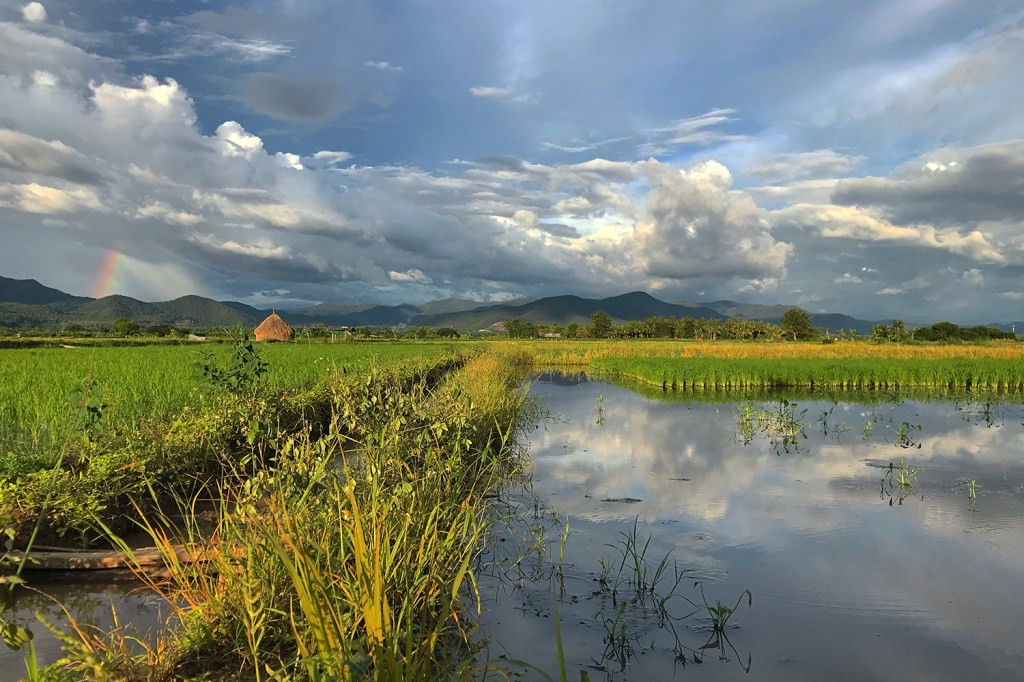
However, in the active rice production landscape, such area with dense vegetation would gradually be converted into active rice fields. The area would be ploughed, then flooded with water making it entirely open. The birds would immediately need to move to nearby fields where they can hide. It makes a huge difference if the whole area is ploughed at once, as the birds would then have no place left to go. I think that is the case for Cho Lae paddies in recent years where the whole area is managed at once leaving no micro habitat diversity.

Once the field is ploughed and flooded, farmers would plant rice seedlings. At first, the field would still be very open but the cover will constantly become denser as the seedlings grow. Some farmers don’t go through the process of planting seedlings but rather sow rice grains directly into the field instead. Either way, once the rice becomes tall enough, the Watercocks would then return and begin to reclaim their territories and start nesting again.
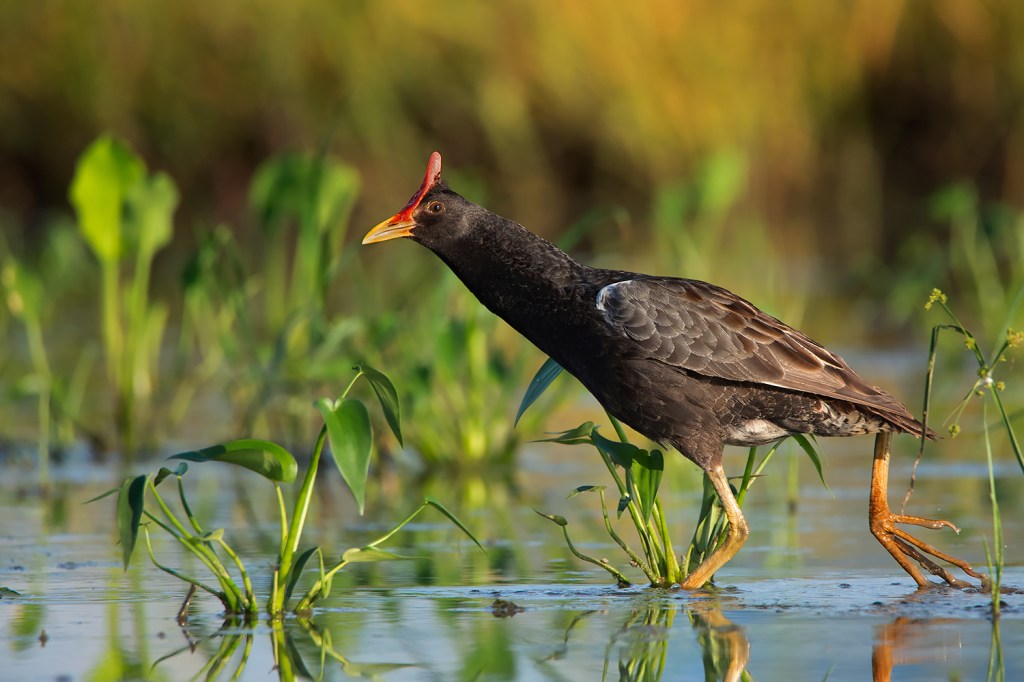
I like to photograph the Watercocks in old/abandoned rice fields as the photos generally look more natural with the plant diversity. Here you can see at least 3 species of plants including the native Monochoria hastata (Hastate-leaved Pondweed) in the foreground and the alien Eichhornia crassipes (Common Water Hyacinth) in the background with some possibly Cyperus sp. on the right.
Since I spent so much time trying to get as many photos of as many Watercocks as possible, I finally have a collection of at least 12 different males from all around Inthakin paddies. It’s really interesting to see how they all looked different from one another. I could almost tell the difference between each individual right away when I saw them in the field. It became quite a connection between me and these birds over the period of a month.

The most unique feature of each individual was the bare frontal shield on the forehead which looks like a crest. This organ seems to come in all sorts of size, shape, length and brightness of colour. It’s almost like our fingerprints that identify us from the others. I think the larger the crest is, the more dominant the bird can be. The individual on the top left had the largest crest among all the birds that I photographed. It was also one of the most vocal and aggressive individuals as well. On the other hand, the 2 individuals on the bottom right had tiny crest and exhibited a mix of breeding adult male and non-breeding plumage. Birds like these were mostly silent and usually appeared briefly only to be chased away by the more dominant males. I’m not exactly sure what they were but I assume that they could be first-summer males.
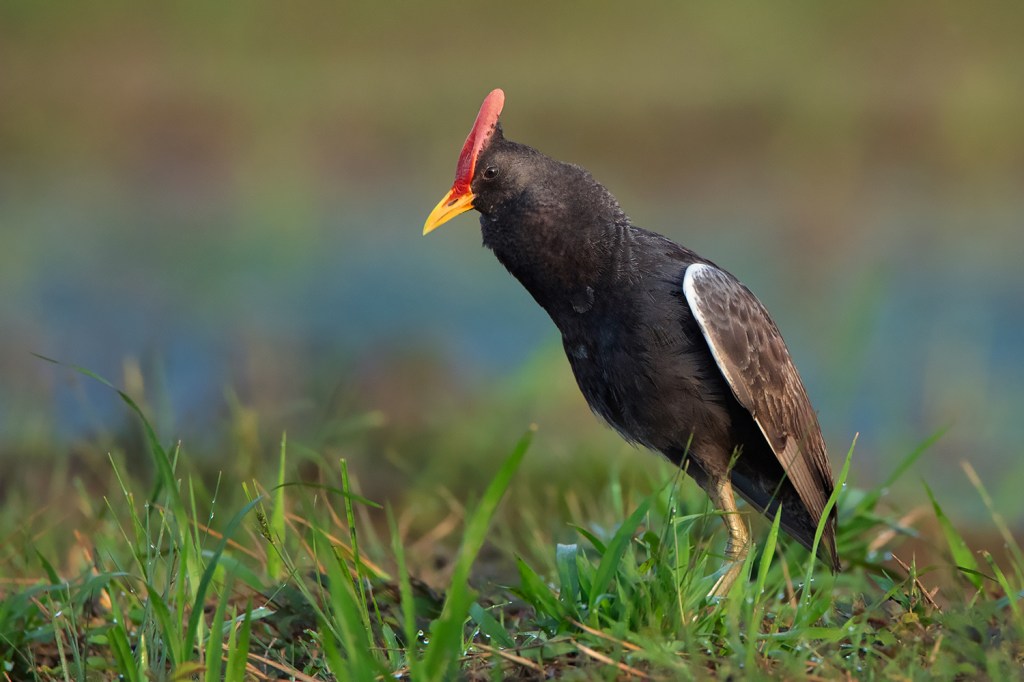


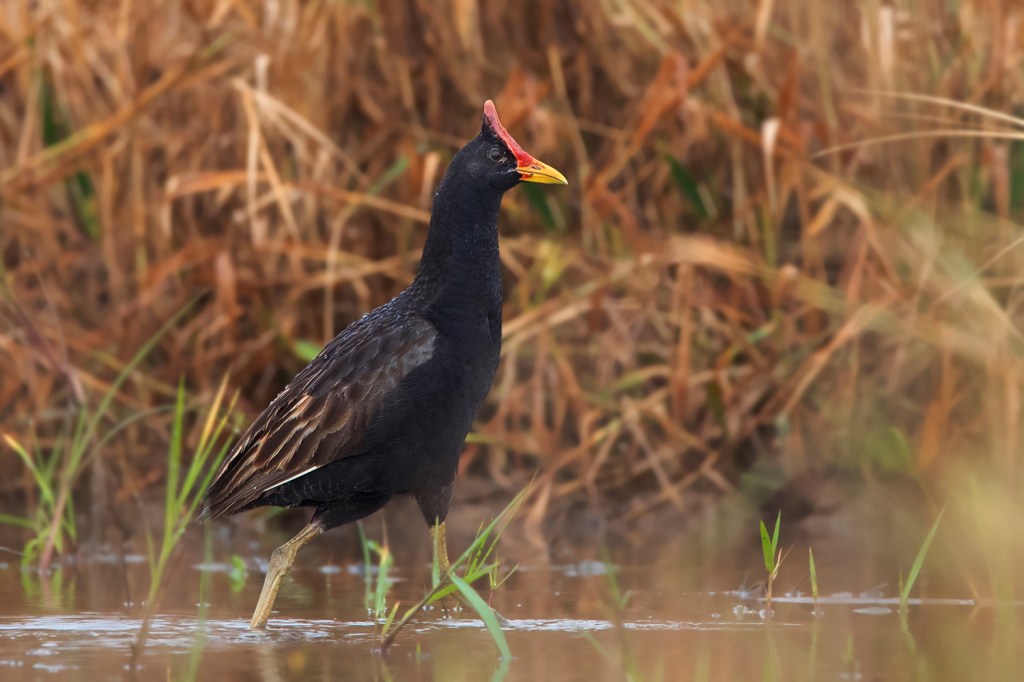
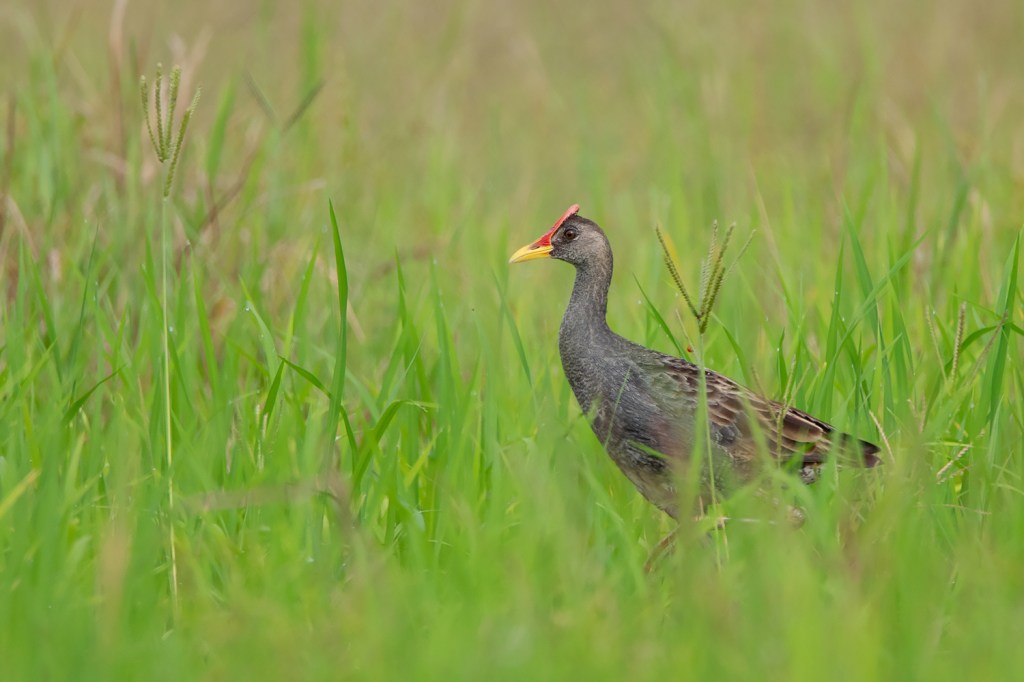
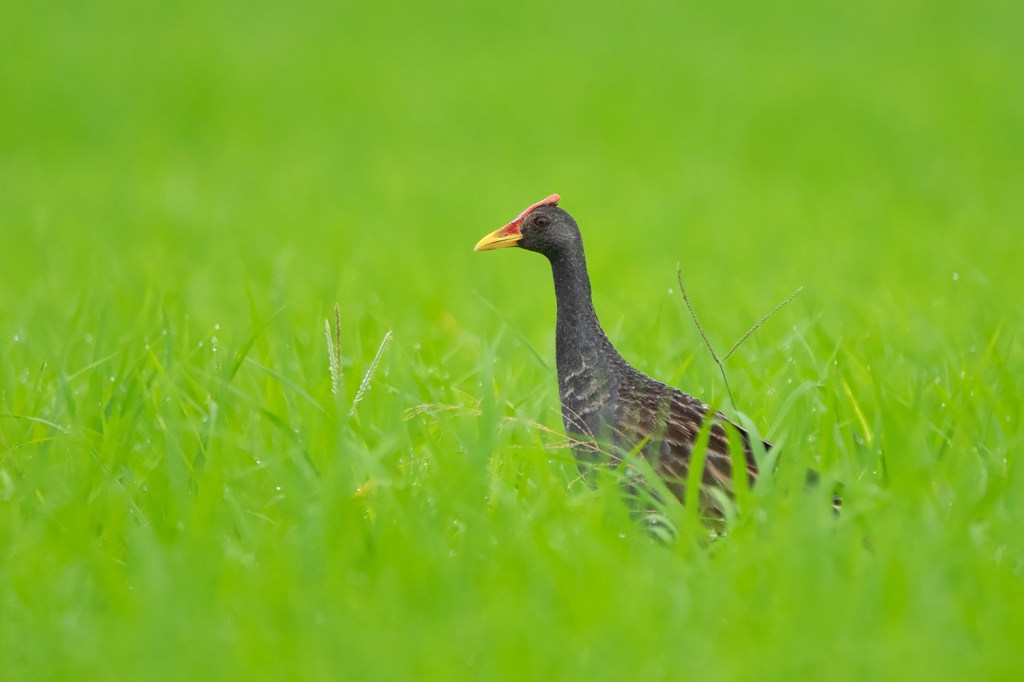
Photos of the birds that I include in this post might mislead you to think that they were photographed easily. They were not. In fact, they still are one of the most difficult farmland birds to photograph even around here. The photos that you see here are the results of going out daily twice a day in the morning and evening for a month straight, doing trials and errors on repeat everyday. Most birds are extremely shy and impossible to be photographed, but some offer higher chances of getting some decent photos. Even the same bird can behave differently at different times. It’s one of the most unpredictable birds to photograph, but that’s exactly what makes it so much fun and rewarding when you succeed.


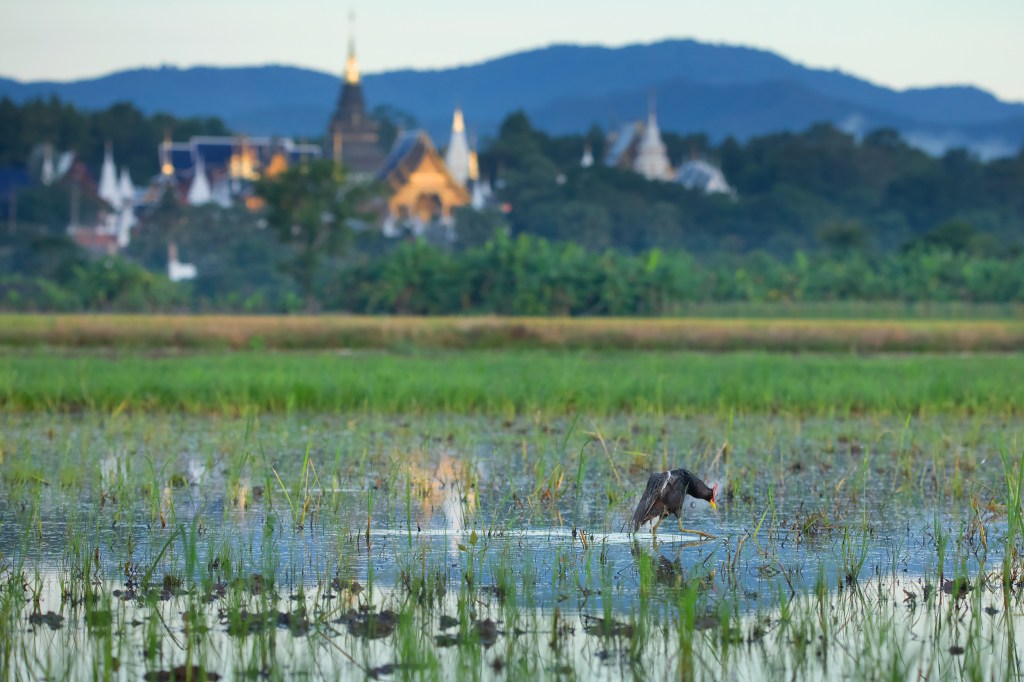

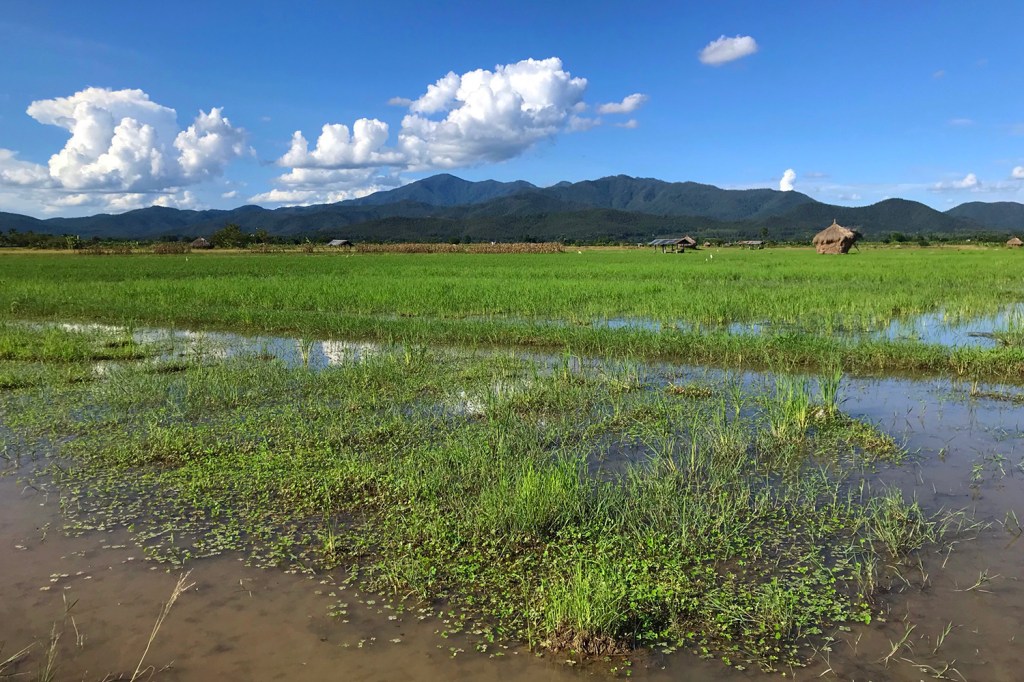



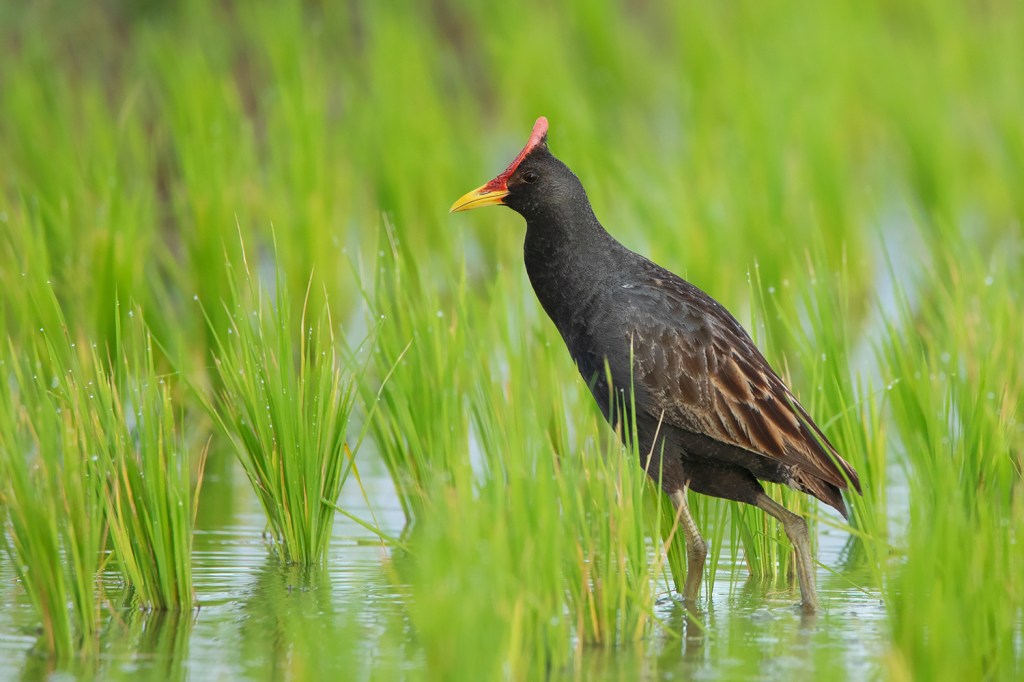



Leave a comment